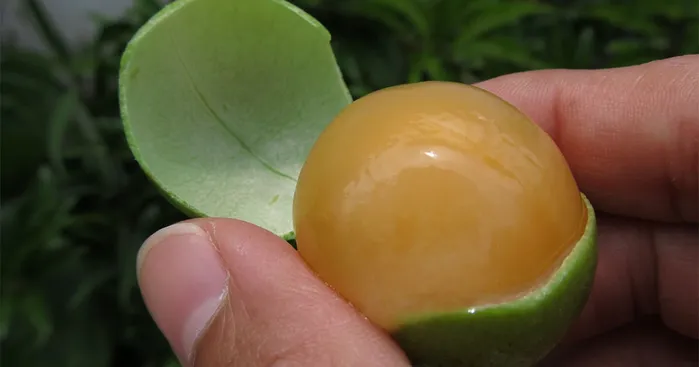Table of Contents

Spanish lime is a type of whitewash made from slaked limestone.
It has been used for centuries to whitewash buildings in Spain, and it is now becoming increasingly popular in other parts of the world.
Spanish lime whitewash is known for its durability, its ability to reflect sunlight, and its ability to protect walls from moisture.
It is also a sustainable choice, as it is made from natural materials.
If you are looking for a durable, weather-resistant whitewash for your home or business, Spanish lime is a great option.
In this blog post, we will explore the history of Spanish lime, its unique properties, and its many benefits.
Spanish lime overview:

Spanish lime (also known as mamoncillo, Spanish lime, chupalote, limoncillo, and maco) is a fruit native to the intertropical zone of America.
The meaning of its name is uncertain, but it may come from the Nahuatl word hueyona, meaning “big pulp,” or the Maya word Wayuum.
The tree on which this fruit grows is a Melicoccus bijugatus.
It is a slow-growing tree that can reach up to 25 meters tall.
Spanish lime is a popular fruit in many parts of the Americas.
It is eaten fresh, canned, or used in making juice, ice cream, and other desserts.
The seeds of this fruit can also be roasted and eaten.
The Spanish lime is a small, round, or oval fruit that grows on a tree.
It is about the size of a grape and has a hard green shell.
When the shell is opened, the skin is separated from the pulp, which has a mild, sweet, and gelatinous orange peach flavor.
The pulp is eaten until the seed is left.
To eat a Spanish lime, you can either open the shell with your teeth and throw away the top half, or you can press your fingers to the bottom of the shell so that the contents slip into your mouth.
Once the pulp is in your mouth, you can eat it until you get to the seed.
Spanish limes are consumed in large quantities, and they are also used to make drinks and jams.
In addition, it is a healthy fruit that is high in vitamins and minerals.
It is also a good source of fiber.
Spanish lime nutritional values and health benefits:

Nutritional values:
This fruit is particularly rich in vitamins, highlighting above all its high vitamin A content (a fundamental nutrient for the care and development of eyesight).
It also has a high mineral content, including calcium, phosphorus, and iron.
It generally provides a few calories, so that one Spanish lime provides just 48 calories.
Among its nutritional contents, we find:
- Calories: 48 kilocalories.
- Carbohydrates: 1 gr.
- Protein: 0.5 gr.
- Fiber: 12.5 gr.
- Vitamins: vitamin A (1,200 I.U.).
- Minerals: calcium, phosphorus, and iron.
Health benefits:

Great anti-diabetic properties:
People with diabetes have a limited choice of fruits, as most fruits contain natural sugars that can raise blood sugar levels.
However, Spanish limes are a good option for diabetics because they contain fructose, a type of sugar that is not as harmful to blood sugar levels.
In addition, the protein substances in Spanish limes can help to lower blood sugar and prevent sugar from being absorbed into the bloodstream.
While Spanish limes are a healthy choice for diabetics, it is still important to consult with your doctor before adding them to your diet.
Your doctor can help you determine the best amount of Spanish limes to eat and how they will fit into your overall treatment plan.
Could help with cancer:
The Spanish lime fruit is often called the “anti-cancer fruit” because of its ability to prevent cancer.
Nonetheless, it is important to note that Spanish lime cannot cure cancer.
However, it does have several properties that can help prevent cancer, including:
- Improvement of epithelial tissue in smokers:
it can help to repair the damage to epithelial tissue caused by smoking.
Epithelial tissue is the lining of the lungs, and it is damaged by the chemicals in tobacco smoke.
This damage can lead to chronic bronchitis and lung cancer. - Protection from other negative effects of tobacco:
it can also help to protect against other negative effects of tobacco, such as heart disease and stroke. - Acting as a shield against cancer cells:
it is a rich source of antioxidants, which can help to protect cells from damage.
Antioxidants can also help to prevent cancer cells from growing and spreading. - It is important to note that this fruit is not a cure for cancer, but it can be a helpful addition to a cancer treatment plan.
If you are considering using Spanish lime to prevent or treat cancer, it is important to talk to your doctor first.
Depurative action
The claim that Spanish lime has a detoxifying effect on the body is based on the fact that it contains fiber.
Fiber helps to move food through the digestive system and can help to remove toxins from the body.
However, there is no scientific evidence to show that Spanish lime is any more effective at detoxifying the body than other fruits or vegetables that are high in fiber.
In fact, the kidneys are the main organs responsible for detoxifying the body.
They filter out waste products from the blood and excrete them in the urine.
There is no reason to believe that eating a certain food can improve the body’s natural detoxification process.
Boosts the immune system
Spanish lime is a good source of vitamin C, which is an essential nutrient for the immune system.
Vitamin C helps the body produce white blood cells, which fight off infection.
It also helps to protect cells from damage from free radicals.
A study published in the journal Nutrients found that people who ate more vitamin C had a lower risk of getting sick.
The study also found that vitamin C can help to shorten the duration of illness if you do get sick.
Source of vitamin B
Spanish lime is a good source of B vitamins, which are essential for energy metabolism.
B vitamins help the body convert food into energy, which is needed for daily activities.
A deficiency in B vitamins can lead to fatigue and other health problems.
A study published in the journal Advances in Nutrition found that people who ate more B vitamins had a lower risk of developing chronic diseases such as heart disease, stroke, and type 2 diabetes.
The study also found that B vitamins can help to improve cognitive function and mood.
Antioxidant power
Spanish lime contains antioxidants, which can help protect the body against damage from free radicals.
Free radicals are unstable molecules that can damage cells and contribute to the development of chronic diseases.
The antioxidants in Spanish lime can help neutralize free radicals and reduce their harmful effects.
A study published in the journal Food and Function found that Spanish lime extract had strong antioxidant activity.
The study also found that this extract could help to protect cells from damage from UV radiation.
In conclusion, it is a fruit that has several potential health benefits.
It is a good source of vitamin C, B vitamins, and antioxidants.
These nutrients can help to boost the immune system, improve energy metabolism, and protect the body against damage from free radicals.
However, it is important to note that more research is needed to fully understand the health benefits of Spanish lime.
If you are considering adding it to your diet, it is a good idea to talk to your doctor first.
Great for the kidneys:
Traditionally, Spanish lime has been used in the region to cleanse the kidneys.
This is because it has detoxifying properties that act directly on the kidneys.
The kidneys are responsible for cleansing the body of toxins, and Spanish lime can help to strengthen the kidneys by cleansing them.
This allows the kidneys to function more effectively, which can help to improve overall health.
Other health benefits:
- It helps prevent and combat various infections, such as kidney and lung infections.
- Thanks to its vitamin C content, Spanish lime is a powerful ally in preventing viruses and bacteria from proliferating in the body.
- In pregnant women, Spanish lime consumption will enhance protein creation, helping to keep defense systems in top condition.
- Can fight colds.
- Helps control fever.
Precautions before you consume Spanish lime:

The biggest danger of eating Spanish lime is not the poisoning, but the falling trees.
As for the trees can grow over 30 meters tall, and only experienced climbers should attempt to harvest the fruit.
Many people have been injured or killed when they have tried to climb Spanish lime trees without the proper training.
Another danger of Spanish lime is the risk of suffocation.
The seeds of this fruit are slippery and can easily become lodged in the throat, causing choking.
This is a particular danger for children, who may not be able to dislodge the seed on their own.
Here are some tips for safely eating Spanish lime:
- Only harvest the fruit from trees that are at least 30 meters tall.
- Never climb a Spanish lime tree without the proper training.
- Do not give this fruit to children under the age of 5.
- If you are concerned about the risk of suffocation, you can remove the seeds before eating them.
Using Spanish lime:

This is a fruit that is native to Mexico and Central America.
It is known for its medicinal properties, vitamins, and minerals.
Also, it can also be used to make delicious dishes and drinks.
- Fresh fruit:
It can be eaten fresh, either by itself or in a salad. It can also be used to make juice or smoothies. - Preserved fruit:
It can be preserved in a variety of ways, including canning, drying, or freezing.
This makes it possible to enjoy Spanish lime even when it is not in season. - Dishes and drinks:
They can be used to make a variety of dishes and drinks.
For example, it can be used to make a refreshing drink, a natural dye, or an alcoholic beverage. - Other uses:
The seeds of the Spanish lime fruit can also be eaten, either roasted or cooked.
They can be used as a substitute for cassava.
In some places, the whole fruit is ground with seeds included, to make a kind of horchata that is used to deworm children.
With this fruit, you can also make:
- Refreshments: smoothies, fruit salads, iced tea, lemonade
- Culinary dishes: sauces, chutneys, compotes, grilled fruit, roasted fruit
- Desserts: pies, tarts, cobblers, crumbles, ice cream, jams, jellies, preserves, honey
